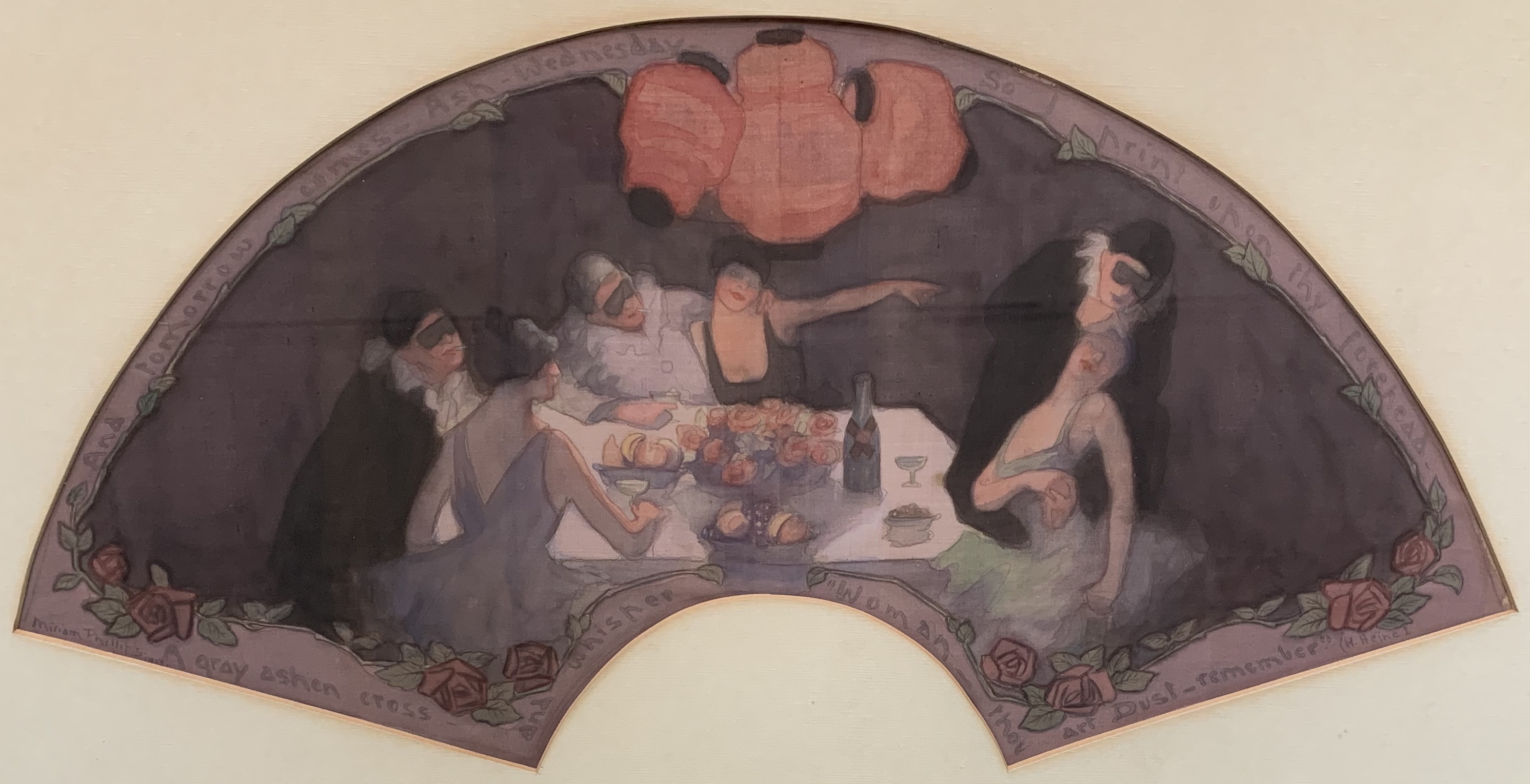Masquerade
Miriam Moxham

Details
- Artist
- Miriam Moxham
- Title
- Masquerade
- Year
- 1917
- Medium
- watercolour on paper
- Size
- 24 x 51 cm (irreg.)
- Details
signed lower left: Miriam Phillips 1917
inscribed: (top) And tomorrow comes – Ash – Wednesday / so I print upon thy forehead – (bottom) A gray ashen cross - / and whisper / “Woman - thou / art Dust – remember.” (H. Heine)
Further Information
The fan shape in western art rose in popularity with the interest in japonisme, particularly in Paris with Degas, Manet, Pissarro, Gauguin, Mucha, Bonnard and Denis all experimenting with the fan shape in their art. In the context of Australian art, Charles Conder first exhibited a fan design in 1893 and it was a format favoured by Thea Proctor whose own work along a similar theme, The masquerade (1927) is in the collection of the State Theatre, Sydney. The shape allows for an exploration of decorative composition and the themes tended towards the theatrical and romantic, often derived from literature. Such literary connections were likely to appeal to Moxham, herself a published poet, illustrating her verses with linocuts and woodcuts.
Miriam Moxham (nee Huntley) was briefly married to John Phillips prior to her second marriage to dentist Leslie John Moxham. Her early studies were with Antonio Dattilo Rubbo and her portrait of him from 1909 is in the collection of the Manly Art Gallery. She undertook further studies at the Julian Ashton school and participated in sketching trips organised by Arthur Murch. Moxham regularly exhibited still life, landscape and genre scenes during the 1930s and 1940s at the Society of Artists and was a finalist on several occasions for the Wynne and Sulman Prizes. Grosvenor Galleries held two solo exhibitions of her work in 1937 and 1951. Her later work was a more realist stylised mural style depicting scenes of modern life, rather than her earlier depictions of figures in ideal landscapes.
Masquerade is adorned with the words by the German poet Heinrich Heine (1799 – 1856) from his Book of Songs:
Drain' d the cup is to the bottom,
Brimming with intoxication,
Foaming, glowing to the margin:
Drain' d the cup is to the bottom.
And the fiddles too are silent,
Which for dancing gave the signal,
Signal for the dance of passion;
Yes, the fiddles too are silent.
And the lamps too are extinguish' d.
Which thjeir wild light shed so brightly
On the masquerade exciting ;
Yes, the lamps too are extinguished.
And tomorrow comes Ash-Wednesday,
When I'll sign upon thy forehead
With the cross of ashes, saying :
"Woman, that thou'rt dust, forget not."'
The accompanying sober words contrast with the revelry of the imagery – the exhilaration of a masked costume; the intimacy of the guests smoking and drinking under the swollen red lanterns; the stylishness of the women’s costume; the elegant coupe champagne glasses on a table alongside full blown roses – all speak of the fragility and transience of life as the lamps are extinguished on the masquerade frivolity and we remember we are but dust.
